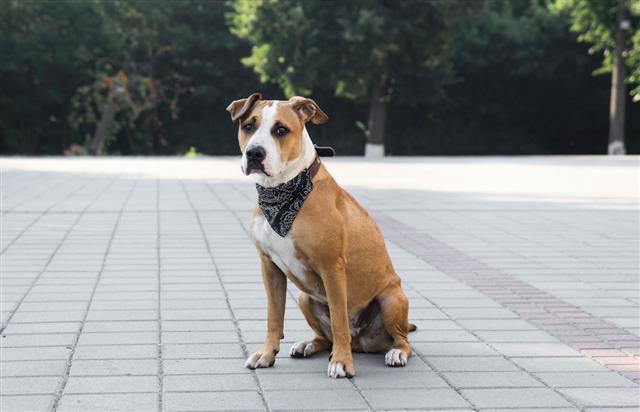
Like humans, dogs suffer from knee problems as well. There are various causes for this condition in dogs. They can arise due to an injury or due to a condition of the knee. Read on.
Have you noticed a dog, chasing a cat, suddenly yelping, pulling up short, and lifting the hind leg, unable to walk properly? Or have you noticed a running dog suddenly yelping, stopping, hopping for a couple of steps, and then resuming his running? If you have, do you wish to know what is common with both the dogs? Both probably suffer from knee problems.
Dog Knee Problems
There are two main types of knee problems in dogs, namely cruciate ligament ruptures and luxating patella. Luxating patella is a common problem in toy breeds of dogs or small dogs, while cruciate ligament ruptures is often seen in large overweight dogs. The other knee ailments affecting dogs are medial meniscus tears, torn knee ligament, trick knee cap, etc.
Let us now understand why there are knee injuries in dogs. Just like in human beings, the knee joint in dogs is the articulation between the thigh bone, also known as femur, and the shin bones, in other words fibula or tibia. The stability in the knee joint comes solely from the soft tissue located in the knee joint.
Symptoms of Dog Knee Problems
Here are the most common symptoms:
- Sudden pain while running is a common symptom of knee problem in dog.
- You will notice that your dog will lift the affected leg off the ground and will not be able to put any weight on the affected leg.
- The dog will have pain even while walking and you will notice that it is limping with the affected leg. Affected dogs will often have a bunny-hopping gait.
- The affected knee joint will be swollen.
- While walking, the dog will find it difficult to shift legs.
Treating Dog Knee Problems
Luxating patella is actually a dislocation of the kneecap. If the luxation of the kneecap is minor, the veterinarian is usually able to push the kneecap back in its place. You will have to do restricting exercises with your pet and also monitor your pet’s activities.
In case you notice your pet is in terrible pain, it may need some painkillers. If the luxation is severe, a surgery might be required, so as to bring the kneecap to its correct position.
Rupturing of the cruciate ligament is often due to wear and tear. Hence, ruptured cruciate ligament are oftentimes found in middle-aged or aging dogs. Ligaments play an important role in holding the bones and cartilages together, so that there is normal and effortless movement in the knee joint.
When the ligament ruptures or tears, bending the knee correctly becomes a problem. Surgery is the only way to correct the problem. These knee surgeries are often expensive.
Prevention of Dog Knee Problems
The problem of knee joint is often caused due to obesity and poor physical conditioning. If the muscles around the knee joint are strong and properly conditioned, they stabilize and protect the ligaments from excessive stress. Obesity is known to cause excessive stress on the joint, which in turn leads to the weakening of the ligaments.
Once the ligaments are weakened, they tear very easily. Hence, you will have to make sure that you do not overfeed your dog and also make sure you are providing it with sufficient exercise. As is rightly said, prevention is better than cure. Take the required precautions in time to avoid seeing your pet in agony.
If your dog is obese and it returns back to normal body weight, recovery from knee problems is faster. If you notice a problem with the dog, it is recommended that you have it shown to the veterinarian. The amount of injury to the knee and the time period between the injury and its correction will determine the recovery.

